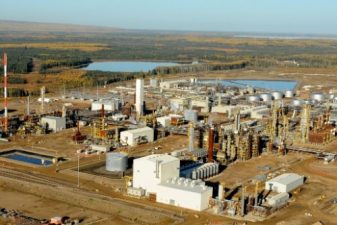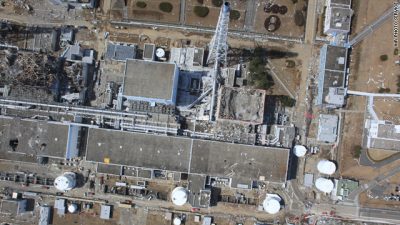 Last week, the government of Saudi Arabia announced that it would go ahead with its nuclear energy ambitions and invest more than $100bn in building 16 nuclear reactors over the next two decades. At a time when other countries like Japan or Germany are looking for exit strategies from nuclear energy production, Saudi Arabia and its rich GCC neighbors, as reported by Green Prophet, continue to push on with their nuclear program.
Last week, the government of Saudi Arabia announced that it would go ahead with its nuclear energy ambitions and invest more than $100bn in building 16 nuclear reactors over the next two decades. At a time when other countries like Japan or Germany are looking for exit strategies from nuclear energy production, Saudi Arabia and its rich GCC neighbors, as reported by Green Prophet, continue to push on with their nuclear program.
Given that most are seven to ten years away from actual power generation, GCC governments view nuclear power as a way to reduce domestic oil and gas consumption. According official sources from Saudi Arabia, the new planned reactors will cover 20 per cent of its electricity needs, as demand in power grows at an estimated 8 per cent during the next ten years.
One may argue that these countries do not seem alarmed by the Fukushima disaster as they perceive that the risks of tsunami or earthquakes in the GCC are low, that the technology has evolved, and/or that proliferation unlikely. However, even if these risks and dangers are minimized, not much has been declared about plans to dispose of toxic nuclear waste.
Nuclear waste is produced in many different ways but the vast majority of radiation in nuclear waste is given off from spent fuel rods. A typical reactor is estimated to generate 20 to 30 tons of high-level nuclear waste annually. In spite of the rhetoric, there is currently no known way to safely dispose of this waste, which remains dangerously radioactive for thousands of years. So assuming that the region develops a conservative 10 reactors of 1000MW- each running an expected lifetime of 50 years- future generations will inherit an estimated average of 25,000 tons of nuclear waste annually.
Meanwhile, far away from Saudi Arabia, 300 km northwest of Helsinki, a vast underground storage facility, Onkalo, is being built as the world’s first “permanent” repository for Finland’s most radioactive nuclear waste. Construction began ten years ago and it will take until 2020 to be completed. The facility will be sealed after one century and is intended to last for 100,000 years, literally “locking away” the waste forever.
Once sealed rather than covering it in warning signs (as we cannot predict how to communicate with humans in 100,000 years) the engineers behind its construction will remove every surface trace of the underground facility with the hope that it will become “ a forgotten site.”
Finland has found one solution (far from ideal) to the nuclear waste problem. For Germany, Japan, the UK and US, the search for a safer solution for nuclear waste is ongoing. Meanwhile, the politically volatile Middle East region is preparing to produce its own waste.
While Saudi Arabia is leading the way, it is not alone in its nuclear ambitions. The United Arab Emirates in December 2009 awarded a South Korean consortium the contract to build four nuclear power plants worth $20.4 billion and plans are on track. Although many of the projects may have waste management solutions built in their plans, and in the UAE instance selected suppliers are required to dispose of nuclear waste outside the country, this is not a sustainable strategy as large-scale deployment of nuclear power in the region will most likely require local storage.
In the end, even if the technology from Fukushima has evolved and security measures have improved, one wonders if these rich GCC governments are considering the long-term implications of nuclear production and how to manage the long hazardous life of radio-active elements found nuclear waste. Can we afford to burden future generations with a new toxic dumping ground, a Middle East version of Onkalo?
More on nuclear in the Middle East
Who’s Going Nuclear in the Middle East
Nuclear Power Continues World Dependence on Middle East Oil
Aussie Govt Offers Uranium Sales to United Arab Emirates



